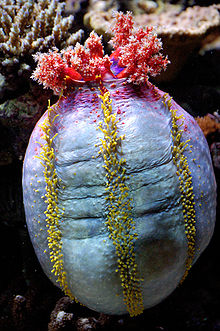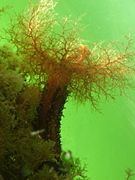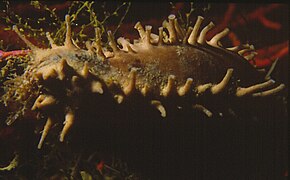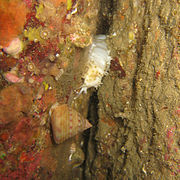
Sea cucumbers are echinoderms from the class Holothuroidea. They are marine animals with a leathery skin and an elongated body containing a single, branched gonad. They are found on the sea floor worldwide. The number of known holothurian species worldwide is about 1,786, with the greatest number being in the Asia-Pacific region. Many of these are gathered for human consumption and some species are cultivated in aquaculture systems. The harvested product is variously referred to as trepang, namako, bêche-de-mer, or balate. Sea cucumbers serve a useful role in the marine ecosystem as they help recycle nutrients, breaking down detritus and other organic matter, after which bacteria can continue the decomposition process.

Holothuria is the type genus of the marine animal family Holothuriidae, part of the class Holothuroidea, commonly known as sea cucumbers. Members of the genus are found in coastal waters in tropical and temperate regions. They are soft-bodied, limbless invertebrates which dwell on the ocean floor and are usually detritivores. They resemble a cucumber in form. The genus contains some species that are harvested and sold as food.

Dendrochirotida are an order of sea cucumbers. Members of this order have branched tentacles and are suspension feeders. Examples include Thyonella and Cucumaria.

Cucumaria is a genus of sea cucumbers.

Actinopyga is a genus of sea cucumbers found in coastal waters in tropical and temperate regions.

Synaptidae is a family of sea cucumbers that have no tube feet, tentacle ampullae, retractor muscles, respiratory trees, or cuvierian tubules. They also lack radial canals of the water-vascular system, with only the circumoral ring present.

Psolidae is a family of sea cucumbers, marine animals with elongated bodies, leathery skins and tentacles that are found on the sea bed.

Caudinidae is a family of sea cucumbers, marine animals with elongated bodies, leathery skins and tentacles that are found on the sea floor.

Sclerodactylidae is a family of sea cucumbers, marine invertebrates with elongated bodies, leathery skins and tentacles.
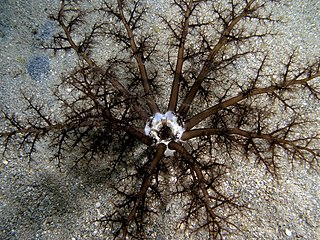
Phyllophoridae is a family of sea cucumbers, marine invertebrates with elongated bodies, leathery skins and feeding tentacles.
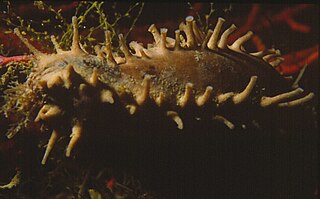
Ocnus is a genus of sea cucumbers in the family Cucumariidae.
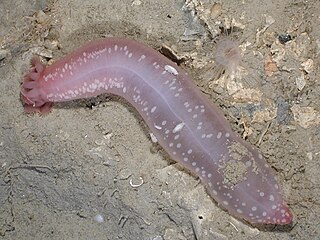
Chiridotidae is a family of sea cucumbers found in the order Apodida. Within the family, there are 16 recognized genera all with different ranges of body types and functions. Sea cucumbers play a fundamental role in many marine ecosystems.

Chiridota is a genus of sea cucumbers in the family Chiridotidae. It is an extant genus but some fossil species are known.

Psolus is a genus of sea cucumbers in the family Psolidae, marine animals with long bodies, leathery skins and tentacles, that inhabit the sea bed.
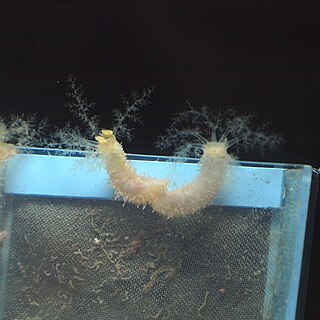
Pseudocnus is a genus of sea cucumbers in the family Cucumariidae.

Trachythyone is a genus of sea cucumbers in the family Cucumariidae.
Leptopentacta is a genus of sea cucumbers in the family Cucumariidae.

Thyone is a genus of sea cucumbers in the family Phyllophoridae.

Mesothuria is a genus of sea cucumbers belonging to the family Synallactidae. The genus has a cosmopolitan distribution.
